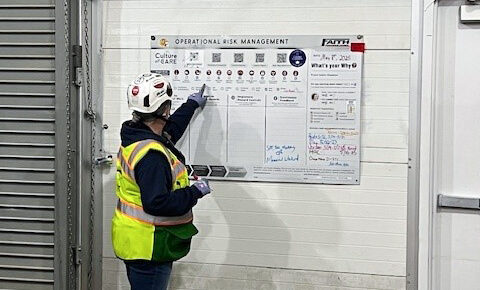
In today’s dynamic corporate landscapes, the age-old problem of balancing workplace safety with optimal productivity has risen to the forefront of organizational concerns. A phenomenon commonly referred to as the “safety cop mentality” can occur – a notion that spotlights the perils of an overzealous approach to enforcing safety policies. By taking an in-depth look at the ramifications on workplace culture and overall productivity, as well as offering practical strategies to cultivate a harmonious safety culture, there are valuable insights for organizations seeking to walk the fine line between safety enforcement and operational efficiency.
Evolution of the Safety Cop Mentality
The emergence of the safety cop mentality can be traced back to the origins of workplace safety regulations and their enforcement. Initially conceived to protect employee well-being, a reckless and relentless focus on enforcement can inadvertently lead to a culture of fear and strained employee-employer relationships.
Impact on Workplace Culture and Productivity
The safety cop mentality casts a long shadow on workplace dynamics and productivity. Its rigid enforcement stifles open communication, obstructs continuous improvement and instigates a climate where employees feel micro-managed and undervalued. This atmosphere dissuades team members from raising safety concerns or contributing innovative solutions due to fear of retribution. Morale takes a hit, turnover rates rise and team cohesion is compromised.
Strategies for Balancing Safety Enforcement and Productivity
At FTI, we know that finding a balance between enforcing safety and enhancing productivity requires adept leadership and a culture of learning and accountability. Effective leadership plays a pivotal role in setting the tone for a culture that values both safety and productivity. Organizations that recognize the importance of learning from mistakes and view safety as a collective responsibility are better equipped to strike this balance. Strategies such as behavior-based safety programs, regular safety training, encouraging employee involvement in safety initiatives and fostering trust and transparency play pivotal roles in achieving this balance.
Cultivating a Positive Safety Culture
To counteract the detrimental effects of the safety cop mentality, organizations must actively cultivate a positive safety culture. This approach extends beyond rule enforcement to empower employees to take ownership of safety practices. By integrating safety into daily operations, fostering a culture of trust and encouraging the reporting of near-misses, organizations can nurture a culture that enhances both employee well-being and overall productivity.
Recommendations for Future Practice
There are several actionable recommendations for organizations seeking to mitigate the negative effects of the safety cop mentality. Leadership commitment, employee engagement and open communication provide a roadmap for organizations to foster a culture that values safety without compromising innovation and productivity. The importance of ongoing training, feedback mechanisms and adaptable safety protocols is underscored, providing practical steps for organizational leaders to implement positive changes.
The prevalent safety cop ideology represents an outdated and uninformed mindset that continues to exert influence within many workplaces across industry landscapes. The concept of safety integrated into design remains regrettably neglected during project inception stages. Better tools for the tasks being performed, fitting the work to the worker and encouraging hazard identification over compliance are all underutilized approaches to making real changes to benefit workers in the workplace. If organizations persist in adhering to these approaches, the outcomes are likely to remain unchanged. The tendency to attribute mishaps to the “accident-prone worker” or those who fail to adhere to regulations is a convenient recourse. Undertaking a substantial shift in the operational implementation of safety requires thorough understanding and firm commitment.
Conclusion
The safety cop mentality serves as a valuable cautionary tale for organizations aiming to prioritize both employee safety and productivity. Striking the right balance between safety enforcement and productivity requires a paradigm shift – one that embraces open communication, continuous learning and a genuine commitment to employee well-being. By navigating this landscape, organizations can reshape their culture and drive positive outcomes far beyond mere rule enforcement.
If you enjoyed this blog article, please subscribe to stay up to date on the latest industry news from our experts at FTI.










